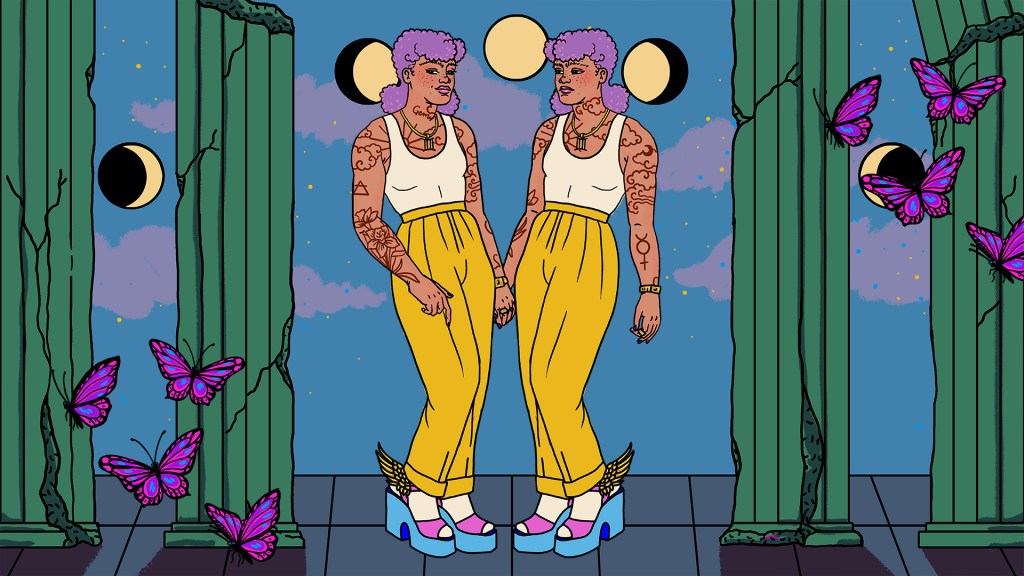The fashion industry has come a long way since the first hominids started protecting themselves against the elements by wearing fur from the wild game they hunted. While advances are undisputed, designers today have only three kinds of materials with which to create clothes and accessories: animal-based materials, which include leather and silk; plant-based textiles, like cotton and linen; and synthetic fibers, largely made from petroleum. None of these, it should be pointed out, is very environmentally friendly.
Advances in biological science over the past few decades, particularly in genetics, have started to open the way for new kinds of less harmful materials: biofabricated textiles made from living microorganisms or cells. Some examples include fibers made from genetically modified yeast, leather made from lab-grown cells, and fabrics sewn with bacteria inside them. It’s a new world where biologists become as important for the fashion industry as clothiers and designers, and test tubes, mixing cylinders, and microscopes become work tools as appreciated as sewing needles and scissors.
Videos by VICE
The pioneers of biofabrication hope to create new, suppler, more sustainable, more resistant, more versatile materials that will expand fashion boundaries. “Those are materials that offer new performance and aesthetic qualities with a much smaller footprint,” said the fashion designer Suzanne Lee, one of the first researchers in this field and the author of Fashioning the Future: Tomorrow’s Wardrobe.
Every year, she organizes the Biofabricate conference, which gathers scientists, stylists, designers, and artists working on cell-material development. The conference goes beyond the fashion industry and presents other biofabricated products, such as perfumes made from microorganisms, bacteria dyes, bone-tissue jewelry, and fungus furniture.
According to Lee, the interest in biofabricated textiles is increasing. “Design schools are starting to explore this field of study,” she said. “There is great interest from the fashion industry, and the scientific community is getting more involved.”
Lee’s first experiments in the field were in 2004, when she started to investigate the possibility of using microbes to synthesize cellulose and replace the plant-based fiber. She developed a formula in which she uses a mix of yeast and bacteria to ferment green tea with sugar. After a few days, the microorganisms in the mixture produce layers of cellulose on top of it. That layer can be harvested, dried in the sun, and used as fabric.
The step-by-step tutorial of her recipe was posted online to allow anyone to grow their own clothes in a tank full of green tea and yeast. With the material, Lee has made jackets, skirts, shirts, and shoes.
According to Lee, a concern about the environment was a central aspect of her study, as it is for many researches in biofabrication. Such products are usually biodegradable and require much less water, land, and energy than traditional textiles. “Fermentation is a much less harmful process to the environment than farming,” she said.
Lee is currently working as the creative director at Modern Meadow, a New York–based company that develops materials made from animal cells. One of her areas of study is lab-grown meat, which doesn’t require animal slaughter. “A lot of our supporters are animal-humane, ethical-fashion, and sustainability activists,” Lee said.
The company is also developing leather made from cell culture. They remove cells from animals with the best characteristics and grow them in the lab, creating fibers and fabrics afterward. The company is still in the research and development stage and expects to put those products out in the next few years.
Another technology that is big right now in the United States is BioLogic, developed by researchers at the Massachusetts Institute of Technology who are investigating the use of microorganisms for intelligent fabrics that can respond to the environment. They analyzed Bacillus subtilis natto bacteria, often used in Japanese cooking to ferment soybeans. These bacteria react to environmental humidity, expanding or reducing their size.
Researchers created a biofilm from the bacteria and printed layers of it for a fabric. Working with New Balance designers, they created a material called Second Skin, which can detect humidity on the wearer’s body and expand. The fabric can feel when the body warms up and starts to sweat. On these humid areas, it opens tiny pores to let the air flow through, cooling the skin.
Promising studies in this field abound. Scientists at Bolt Threads, for example, are developing a silk made from lab-grown spider webs. The material is a product of genetically modified yeast spliced with spider genes.
Meanwhile, the artist Erin Smith, who works for Microsoft Research, made her wedding dress from fungi found in nature. She constructed it out of mycelium, the white matter of a mushroom. And since you don’t usually wear your bridal gown twice, she was able to dispose of it to decompose in the open air.
Lee estimates it will still take some time before these materials arrive on store shelves. Because the technology to produce them is still very exclusive, they will probably get to the luxury market first. But enthusiasts expect you will someday be able to find clothes made from bacteria, fungi, and living cells at department stores.
This article was paid for by Copenhagen Fashion Summit and was created independently from VICE’s editorial staff.



